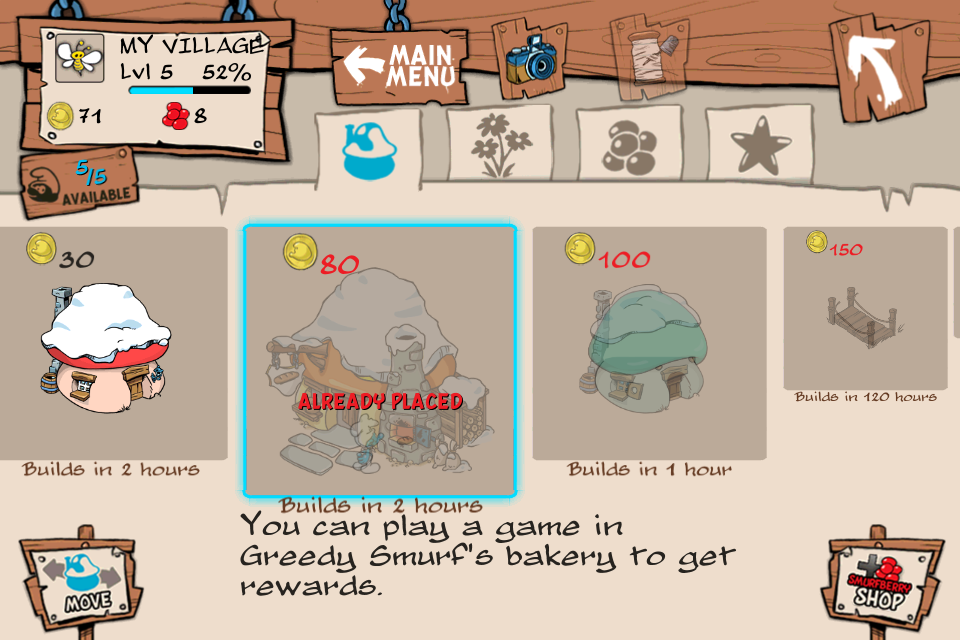Ever since FarmVille came out in 2009, game developers have been quick to replicate its playability – oftentimes producing something that is, essentially, the same thing they’re trying to replicate. Games like Zombie Farm, CityVille, and the more recent SimCity Social are all based off of the same “grid & grow” concept. The games are usually based on square tiles, set on a limited map in which the player can plant or build various objects.
After ‘The Smurfs’ movie came out in 2011 – a sequel of which is being released this year – interest in the franchise was renewed once more, and somewhere along the way developers decided a FarmVille-esque game would help keep interest in the franchise alive. Thus Smurfs’ Village was released, and has earned a five star rating on iTunes.
From a critical standpoint, though, the game is somewhat lackluster. Like FarmVille, it forces players to build patches of farmland and grass across a grid. Very few things set Smurfs’ Village and FarmVille apart, perhaps the graphics being the largest. The player is guided through the first few steps by a series of signs saying “do this” and “do that”. These signs give you the basis for what the player is supposed to do for the rest of the game. Every now and then, the screen cuts to a short animation that supposedly pushes the storyline of the app further along, though if the player is looking to just play the game these animations can be skimmed through by repetitively tapping the screen.

There’s no set rhyme or reason to the game. The starter’s guide will force you to build homes for different Smurfs and farmland for foods and berries. Individual Smurfs will eventually offer up quests for the player to complete, usually involving sending a certain Smurf into the forest or across the water – sometimes even building a certain structure, like a bakery. Building farmland near rivers does not increase the effectiveness of the farm or shorten the time it takes to grow a particular food item. Smurfs wander around aimlessly, sometimes carrying gifts, until they are directed to actually go do something (build a farm, build a house, wander off on a quest). Everything the player does will effectively increase their XP, which will directly impact what they can and cannot build. The higher the level, the more items available to use.
Visually, aesthetically, the game is different from FarmVille. At its core, however, it feels far too familiar to its social network based cousin to effectively stand on its own without getting very boring very quickly. Like many other games before it, it is free. Although, like many other games before it, more content does actually cost something.
The game itself is playable enough, but it lacks any certain factor that sets it apart from similar games. Smurfs’ Village is, if anything, an unfortunate knockoff of grid-based games and that is the game’s one downfall. Like FarmVille, this game will have both its heyday and its quick decline in popularity.